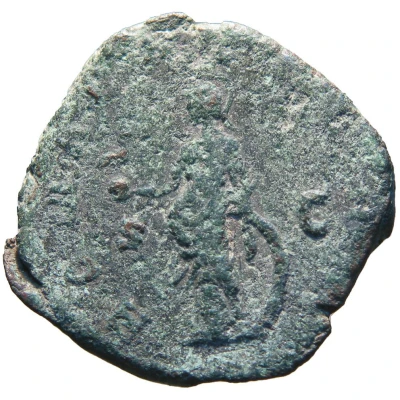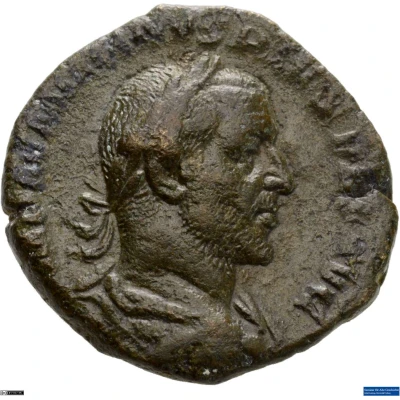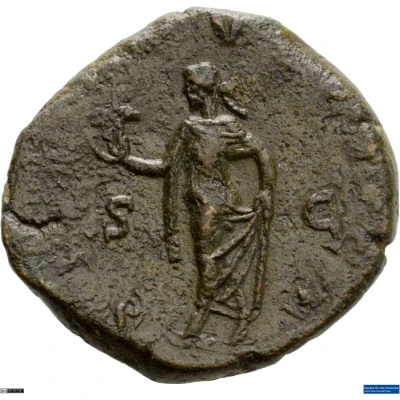


© Trustees of the British Museum
Sestertius - Aemilianus ROMAE AETERN; Roma
253 year| Bronze | 17.5 g | 33 mm |
| Issuer | Rome › Roman Empire (27 BC - 395 AD) |
|---|---|
| Emperor | Aemilianus (Marcus Aemilus Aemilianus) (253) |
| Type | Standard circulation coin |
| Year | 253 |
| Value | Sestertius (⅛) |
| Currency | Antoninianus, Reform of Caracalla (AD 215 – 301) |
| Composition | Bronze |
| Weight | 17.5 g |
| Diameter | 33 mm |
| Shape | Round (irregular) |
| Technique | Hammered |
| Demonetized | Yes |
| Updated | 2024-10-05 |
| Numista | N#284711 |
|---|---|
| Rarity index | 100% |
Reverse
Roma, helmeted, draped, standing left, holding phoenix on globe in right hand and spear in left hand; to her right, shields.
Script: Latin
Lettering: ROMAE AETERN
Translation:
Romae Aeternae.
Everlasting Rome.
Comment
Mass varies: 15.33–19.94 g;Example of this type:
Trustees of the British Museum
Source:
Online Coins of the Roman Empire (OCRE)
Interesting fact
The Sestertius - Aemilianus coin was minted during the reign of Emperor Aemilianus, who ruled the Roman Empire for a brief period of time in 253 AD. Despite his short reign, Aemilianus was able to issue a large number of coins, including the Sestertius - Aemilianus, which was widely used throughout the empire. One interesting fact about this coin is that it features a unique design on its reverse side. While most Roman coins of this era featured images of gods, goddesses, or other mythological figures, the Sestertius - Aemilianus features a depiction of the Roman goddess Roma, seated on a throne and holding a scepter. This design was a departure from the usual imagery seen on Roman coins and highlights the importance of Roma as a symbol of the Roman Empire. Overall, the Sestertius - Aemilianus is a fascinating piece of history that provides a glimpse into the currency and culture of ancient Rome during a time of great change and upheaval.

